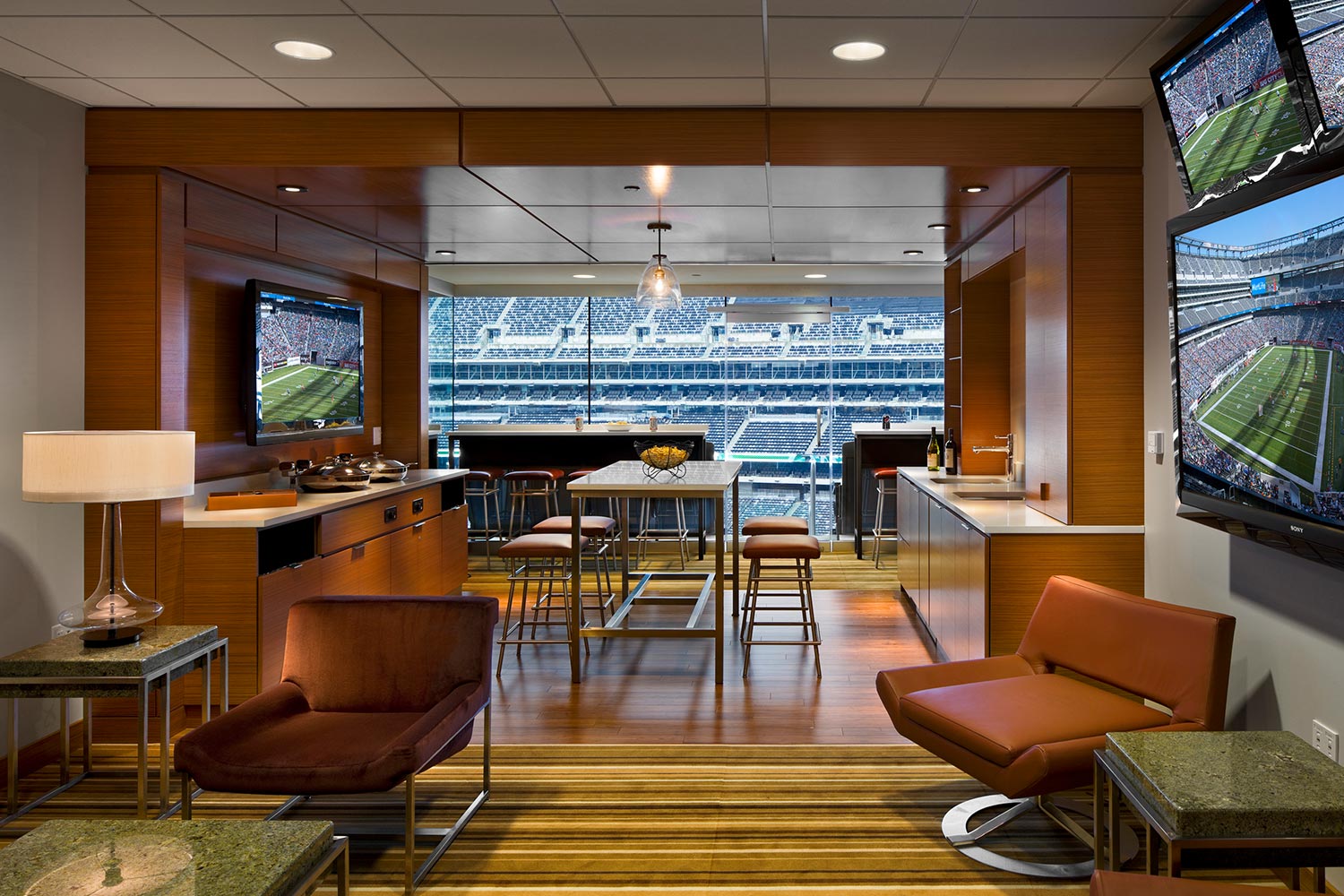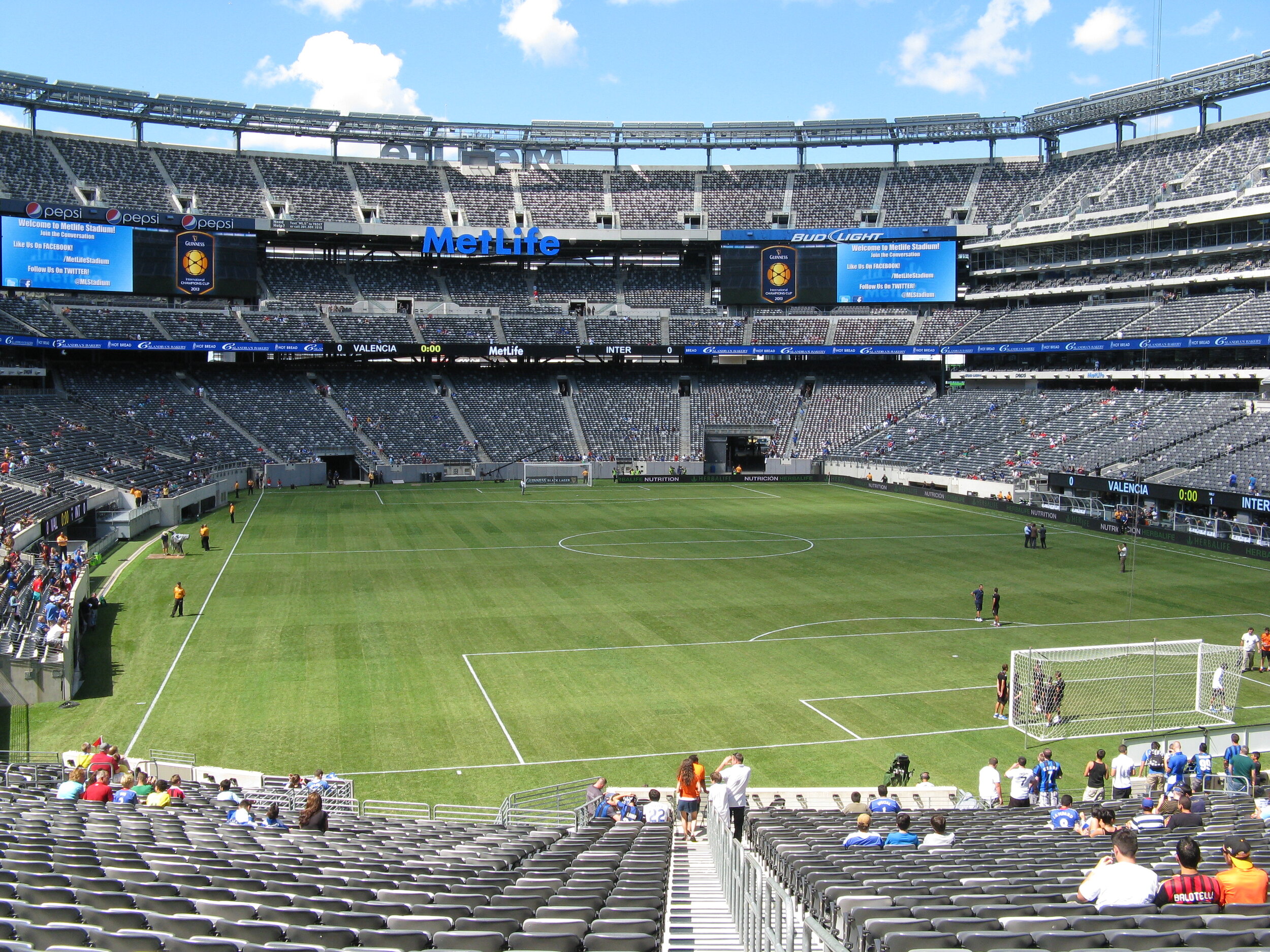Have you ever wondered about the massive structure that hosts two NFL teams, grand concerts, and countless other events in East Rutherford, New Jersey? It's a place many people know, yet the question of "Who owns MetLife Stadium?" often brings up a bit of confusion. This isn't just about a building; it's about a significant piece of sports infrastructure, a hub for community gatherings, and a huge business venture all rolled into one. Knowing the true owners helps us understand so much more about how this impressive venue operates and why it matters so much to so many.
For many football fans, MetLife Stadium is simply the home turf for the New York Giants and the New York Jets. It’s where Sunday afternoons come alive with cheering crowds and exciting plays. Yet, the actual ownership structure of a place this big, this important, is a bit more involved than just a single entity or a simple name on a deed. It really is quite interesting when you look closely at it.
So, who really has the claim, the authority, the power over this colossal stadium? When we talk about "owning" something, it can mean different things. For a saucepan, it's pretty clear; it belongs to you. For a massive stadium, the idea of ownership can mean recognizing who has full claim, or dominion, over it, as our understanding of "owns" often tells us. This article will look into that very question, making things clearer for everyone who's curious.
Table of Contents
- The True Owners: A Joint Venture
- Why This Ownership Model Makes Sense
- The Stadium's Financial Journey
- What It Means to Own a Stadium
- More Than Just Football: Events and Impact
- The Naming Rights Deal: MetLife
- Frequently Asked Questions About MetLife Stadium
- Looking Ahead for MetLife Stadium
The True Owners: A Joint Venture
When we talk about who truly owns MetLife Stadium, it's not a single person or even one company. Instead, the stadium is actually owned by a joint venture. This venture involves the two National Football League teams that call the stadium home. We're talking about the New York Giants and the New York Jets. They, together, share the full claim to the property, which is quite unique in the world of sports. It's almost like they decided to build a house together and share everything that comes with it, from the bills to the bragging rights, you know?
This arrangement means that both franchises put in the money and effort to build the stadium. They also share in the operation of the venue. It’s a partnership, pure and simple. This kind of shared ownership is not something you see every day with major sports venues. Usually, a stadium belongs to one team, or perhaps the city itself. But here, the Giants and the Jets really do own it, equally, which is a bit different.
They recognized each other as having full claim to this huge project from the start. This shared dominion means they both benefit from the stadium's success. It also means they both carry the responsibilities that come with such a large property. It’s a very practical solution for two teams sharing the same market, in some respects.
Why This Ownership Model Makes Sense
The decision for the Giants and Jets to co-own their stadium was, actually, a very strategic one. Both teams had played at Giants Stadium for many years. That older stadium, while beloved, was getting old and needed a lot of upgrades. Building a brand new, modern facility is an incredibly expensive undertaking. It costs billions of dollars, you see.
By joining forces, the two teams could pool their resources. This made the financial burden much more manageable for each of them. It also allowed them to create a state-of-the-art venue without needing significant public funding, which is a common point of contention for many stadium projects. This way, they could build what they wanted, on their own terms, more or less.
Moreover, having both teams as owners ensures that the stadium meets the needs of both franchises. They both have a say in how the stadium is run, what improvements are made, and how revenues are shared. This collaborative approach helps avoid potential conflicts that might arise if one team was just a tenant in another's building. It truly is a partnership where both sides have an equal voice, which is rather important for long-term success.
The Stadium's Financial Journey
Building MetLife Stadium was a massive financial undertaking, costing about $1.6 billion. This made it, at the time of its completion in 2010, the most expensive stadium ever built. The Giants and Jets financed this project privately. This means they did not rely on taxpayer money for construction, which is something many communities appreciate. They basically put their own money into it, and that's a big deal.
The revenue streams for the stadium are quite varied. They come from ticket sales, luxury suite rentals, concessions, merchandise, and, of course, the naming rights deal. These revenues help to pay off the construction costs and cover the ongoing operational expenses. It’s a complex financial picture, but it works because of the high demand for events at the stadium, you know?
The teams also benefit from a significant portion of these revenues directly. This direct ownership means they get to keep more of the money generated by the stadium. It's a very different situation from teams that lease their stadiums from a city or another entity. In those cases, a good chunk of the revenue might go to the landlord. Here, the teams are their own landlords, which is pretty smart, actually.
What It Means to Own a Stadium
When we say the Giants and Jets "own" MetLife Stadium, what does that really mean? According to our understanding, "own" can mean to acknowledge something as one's own, or to recognize as having full claim, authority, power, or dominion over something. In this case, it means they have direct control over the property. They make the decisions about its upkeep, its future, and how it is used. This is unlike a situation where a team might just rent a space. They don't just use it; they have the final say on it, more or less.
It means they are responsible for all aspects of the stadium's operation. This includes everything from maintenance and repairs to scheduling events and managing staff. It's a huge responsibility, but it also gives them a great deal of flexibility and control. They can make choices that directly benefit their teams and their fans, which is a good thing for everyone involved.
The concept of "owning" something implies that it belongs to you, and if something can be bought, it can be owned. The Giants and Jets, in a very real sense, bought this stadium. They made it their own. This gives them a strong, stable home for their franchises for many years to come. It's a long-term investment that provides security and a powerful asset for both organizations. Learn more about stadium ownership models on our site.
More Than Just Football: Events and Impact
While MetLife Stadium is primarily known as a football venue, its ownership by two NFL teams also means it's a versatile space for many other large-scale events. It hosts major concerts, international soccer matches, college football games, and even WrestleManias. This wide range of events brings in additional revenue and helps keep the stadium busy year-round. It's not just for Sundays in the fall, you know?
The stadium's ability to attract such diverse events has a significant economic impact on the surrounding area. It brings in visitors, creates jobs, and generates tax revenue for the state of New Jersey. The owners, the Giants and Jets, benefit from these events, and so does the local community. It's a win-win situation, really, for everyone involved.
The stadium has become a landmark in the region, a place where memories are made for millions of people. Whether it's seeing your favorite band or cheering on your football team, the stadium serves as a central gathering place. Its continued success and ability to draw big crowds show the value of this shared ownership model. It really has become a very important spot, apparently.
The Naming Rights Deal: MetLife
Many people get a little mixed up about the stadium's name. They hear "MetLife Stadium" and wonder if MetLife, the insurance company, owns the place. This is a very common question. The truth is, MetLife does not own the stadium. Their name is on the building because of a naming rights agreement. This is a very common practice in professional sports, by the way.
MetLife paid a substantial amount of money for the right to have their name associated with the stadium for a set number of years. This deal provides a significant revenue stream for the Giants and Jets, helping them offset the costs of building and operating the stadium. It's a marketing agreement, pure and simple, not an ownership stake. So, while you see the MetLife name everywhere, they don't actually hold the deed or have dominion over the property.
The naming rights deal is a key part of the stadium's financial model. It allows the owners to generate income beyond just event revenues. This kind of partnership benefits both the teams and the company paying for the naming rights, as it gives them massive exposure. It's a clever way to make a lot of money, honestly.
Frequently Asked Questions About MetLife Stadium
People often have many questions about this huge stadium. Here are some common ones that might pop up in your mind:
Is MetLife Stadium publicly owned?
No, MetLife Stadium is not publicly owned. It was privately financed and is owned by the New York Giants and the New York Jets, through a joint venture. This means no taxpayer money was used for its construction, which is something quite unusual for a stadium of this size. It's completely private, in a way.
Do the Giants and Jets share the stadium equally?
Yes, the New York Giants and the New York Jets share ownership of MetLife Stadium equally. They are equal partners in the joint venture that owns and operates the facility. This means they both have equal say in decisions and share in the stadium's revenues and expenses. It's a true 50/50 partnership, you know?
When was MetLife Stadium built?
MetLife Stadium officially opened its doors on April 10, 2010. It replaced the old Giants Stadium, which had served as the home for both teams for many years. Its construction took several years, and it was a massive project, very, very large in scale.
Looking Ahead for MetLife Stadium
As of late 2023, MetLife Stadium continues to be a vibrant and busy venue. Its unique ownership structure has allowed it to thrive. The stadium is set to host major international events in the coming years, which will only add to its legacy. This ongoing success shows the strength of the partnership between the Giants and the Jets. They really do have a good thing going, it seems.
The fact that the teams themselves own the stadium gives them a stable foundation for their future. They can continue to invest in upgrades and improvements, ensuring the stadium remains a top-tier facility for decades to come. This long-term vision benefits not only the teams but also the fans who come to experience events there. It's a pretty big deal, actually.
So, the next time you hear someone ask, "Who owns MetLife Stadium?", you can confidently share the answer. It's a testament to collaboration and smart business, a shared dominion between two rival teams that found a way to build something truly grand together. To learn more about the business of sports venues, check out our other articles.



